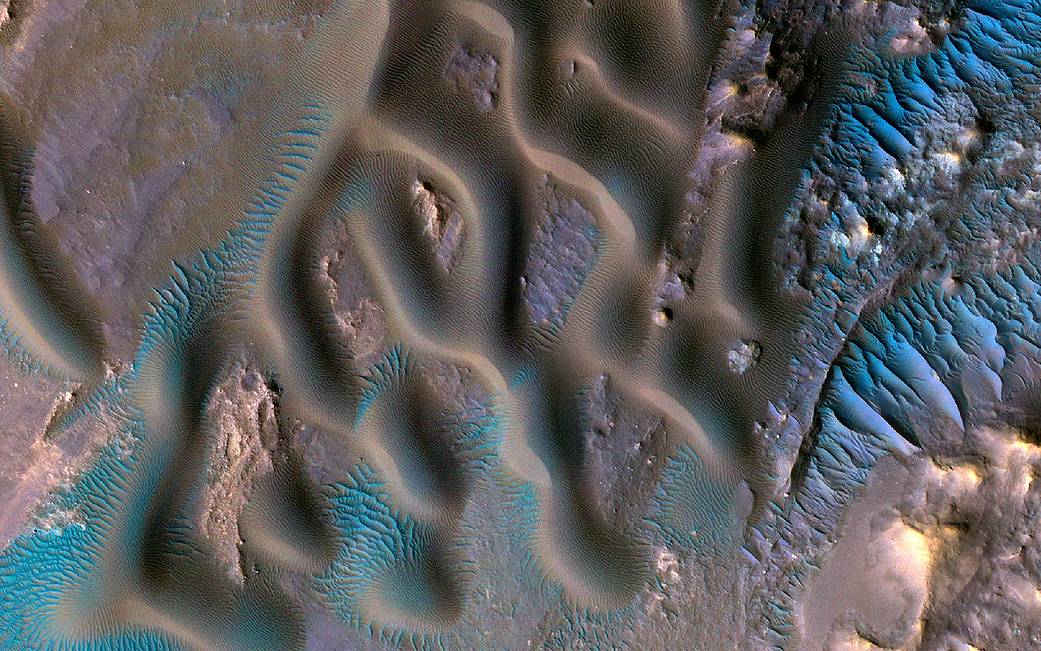Though Mars is the Red Planet, false-color images can help us learn about its weather and geology. This image shows a variety of wind-related features on the Red Planet near the center of Gamboa Crater. Larger sand dunes form sinuous crests and individual domes.
There are tiny ripples on the tops of the dunes, only several feet from crest-to-crest. These merge into larger mega-ripples about 30 feet apart that radiate outward from the dunes. The larger, brighter formations that are roughly parallel are called “Transverse Aeolian Ridges” (TAR). These TAR are covered with very coarse sand.
The mega-ripples appear blue-green on one side of an enhanced color cutout while the TAR appear brighter blue on the other. This could be because the TAR are actively moving under the force of the wind, clearing away darker dust and making them brighter. All of these different features can indicate which way the wind was blowing when they formed. Being able to study such variety so close together allows us to see their relationships and compare and contrast features to examine what they are made of and how they formed.
Image Credit: NASA/JPL-Caltech/University of Arizona
虽然火星是一颗红色的行星,但假彩色图像可以帮助我们了解它的天气和地质情况。这张图片显示了甘博亚陨石坑中心附近这颗红色行星上与风有关的各种特征。较大的沙丘形成蜿蜒的波峰和单个圆顶。
沙丘顶部有微小的涟漪,从一个沙丘的顶部到另一个沙丘的顶部只有几英尺。它们汇合成相距约30英尺的更大的巨型涟漪,从沙丘向外辐射。大致平行的较大、较亮的地层称为横向风成脊(TAR)。这些TAR上覆盖着非常粗糙的沙子。
巨大的涟漪在增强的颜色切割的一侧呈现蓝绿色,而TAR在另一侧呈现明亮的蓝色。这可能是因为TAR在风力作用下积极移动,清除了较暗的尘埃,使其变得更亮。所有这些不同的特征都可以表明风形成时的风向。能够如此紧密地研究这些变化,使我们能够看到它们的关系,比较和对比特征,以检查它们是由什么组成的,以及它们是如何形成的。
影像来源:NASA/JPL-Caltech/University of Arizona







